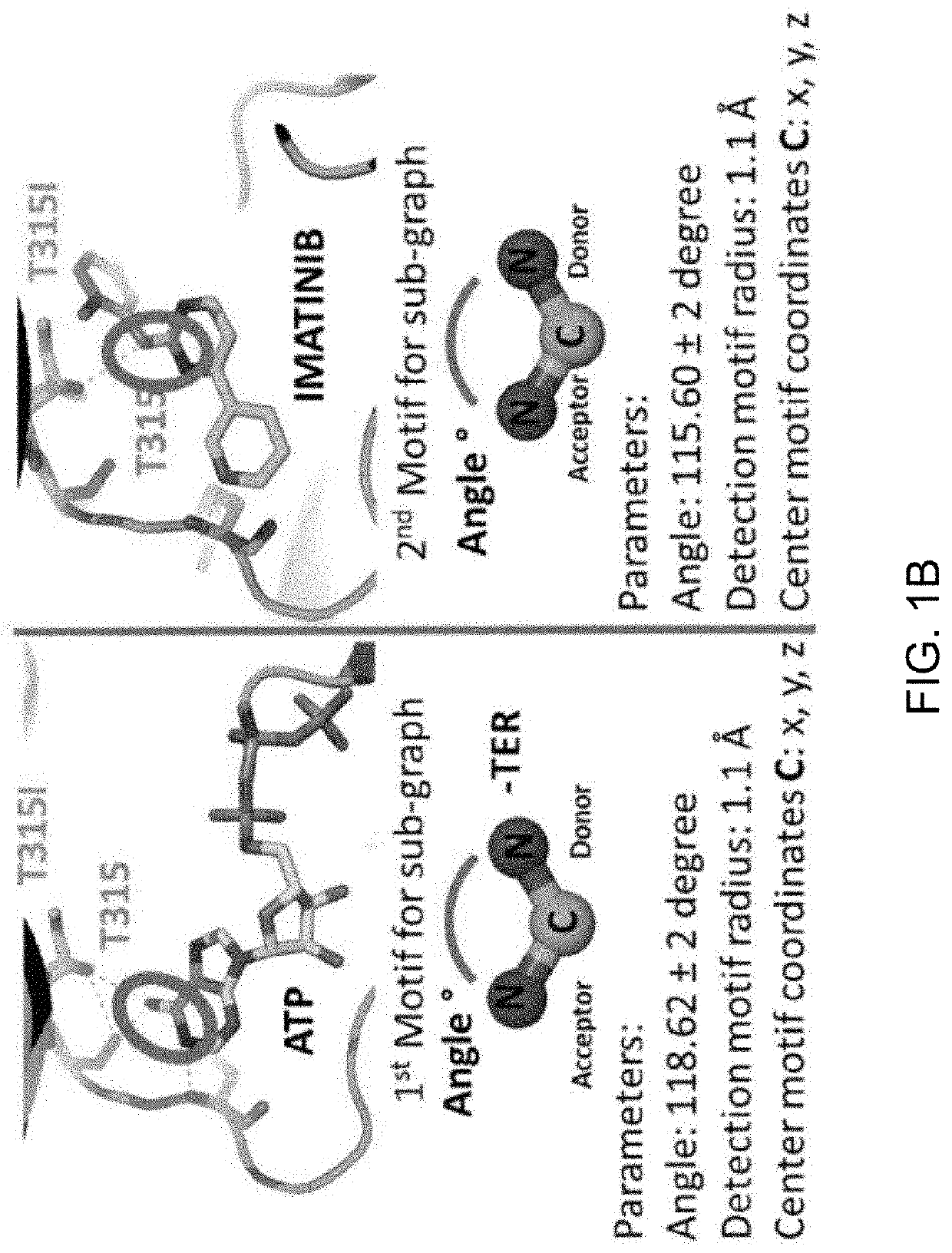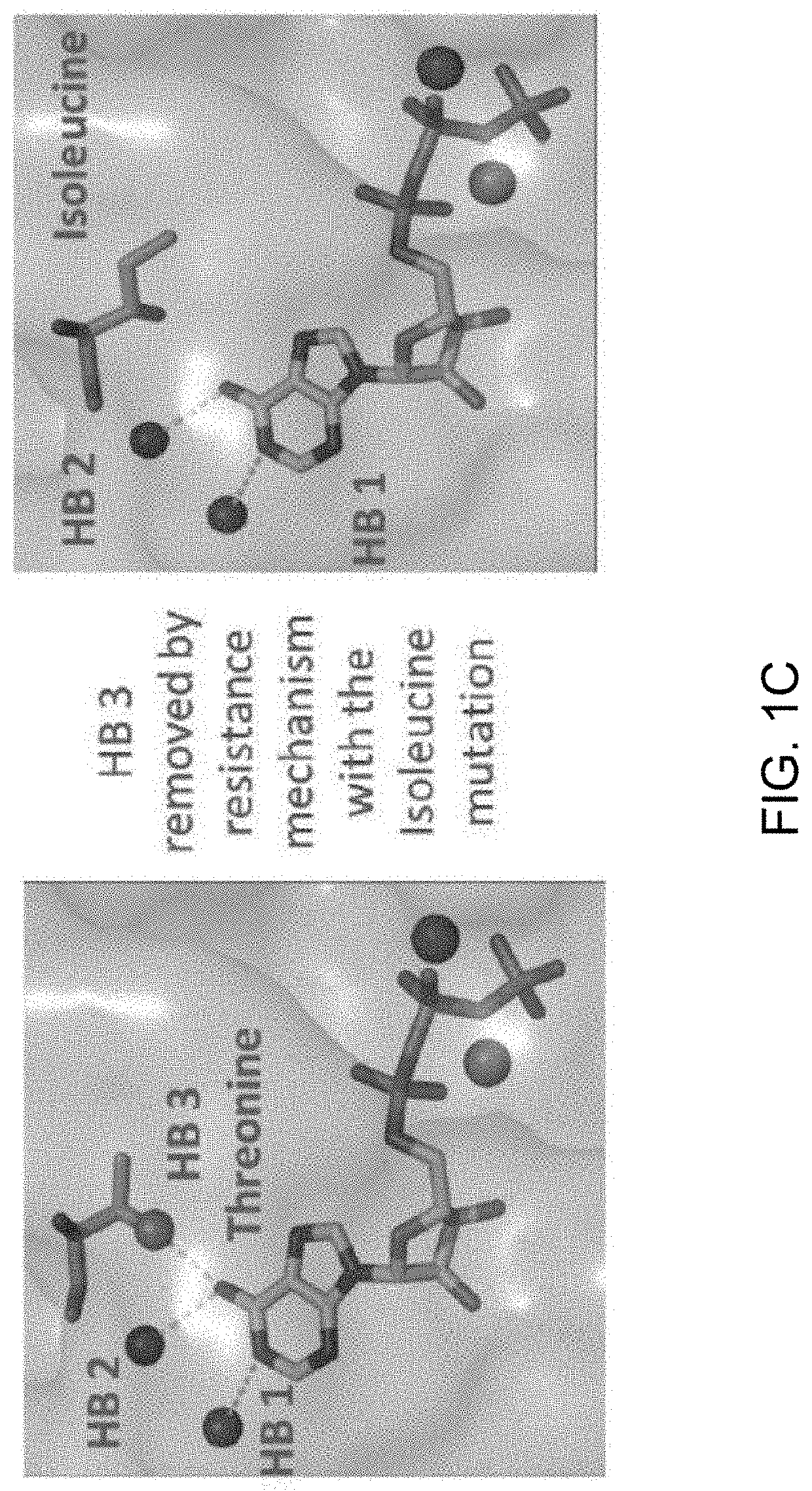Methods and systems for determination of an effective therapeutic regimen and drug discovery
a technology of applied in the field of methods and systems for determining an effective therapeutic regimen and drug discovery, can solve the problems of inability to predict or monitor patients, difficult detection and treatment, and inability to accurately predict patients
- Summary
- Abstract
- Description
- Claims
- Application Information
AI Technical Summary
Benefits of technology
Problems solved by technology
Method used
Image
Examples
example i
Construction of a Human Protein Kinase
[0091]A library was constructed of all the human protein kinase structures that have been published in the Protein Data Bank. The database provided information regarding any mutations in the kinase, the location of any mutations within the three dimensional structure of the kinase as well as whether an approved drug has been crystalized with a kinase and an associated mutation. The library was assembled using a DNA SEQ script. The DNA SEQ script can be run (used) on the Protein Data Bank (PDB). All available PDB files that contain a human kinase structure are “pruned” (term “pruning” is referred to alteration of PDB file in very unique way) and aligned to the first crystal structure of protein kinase that is 1ATP. The script divides the protein from the ligand. The final library has the following structural files:
[0092]ZZxxxxx that represents all the protein kinases aligned (using DNA SEQ script).
[0093]AAxxxxx that represent all the ligands gene...
example ii
3D Pattern Matching Machine Learning Algorithm
[0102]The 3D pattern matching machine learning algorithm was developed using similar structures to define interactions, maximum common subgraph problem, reduction to a maximum clique problem, and branch and bound based algorithms.
[0103]The first objective was to compute MCS for every pair of molecules in the dataset; finds groups of “similar” molecules; represent the data set visually in a 3D space, so that “similar” molecules would be close to one another. MCS=Maximum Common Sub Graph. This definition is currently being used in pattern matching and machine learning. In a simple way it means that if man or women is perfectly dressed—the key elements combining and creating maximum Common Sub graph of Elegance / Style, must include: shoes, bag, dress, watch. Nobody cares about his / her underwear. Some designers / mathematician will eliminate the watch. Then if we run millions of them defining the maximum common sub graph we might end up with sh...
example iii
Identification of Novel Resistance Mutation in Breast Cancer
[0135]Full exon analysis was performed on two patients diagnosed with ER+ breast cancer and who have developed resistance to aromatase inhibitors. Crystallographic analysis of 22,000 gene panels sequenced identified a specific mutation in the tumor cells of both patients that is not present in either patients germ line. Patient #1 exhibited a SNP heterologous mutation in the tumor cell in receptor ESR1, Y537S. Patient #2 exhibited a specific isoform of ESR2 receptor with a SNP heterologous mutation, V497M. Further analysis of the ESR1 mutation adjacent to the residue Y537 demonstrated that the sequence clearly identifies the tyrosine kinase phosphorylation site. Any mutation of tyrosine to serine would therefore result in the loss of control of phosphorylation by both the tyrosine and serine kinases. The only possible phosphorylation event that could occur would be the phosphorylation by the dual specificity kinase MEK. The...
PUM
 Login to View More
Login to View More Abstract
Description
Claims
Application Information
 Login to View More
Login to View More - R&D
- Intellectual Property
- Life Sciences
- Materials
- Tech Scout
- Unparalleled Data Quality
- Higher Quality Content
- 60% Fewer Hallucinations
Browse by: Latest US Patents, China's latest patents, Technical Efficacy Thesaurus, Application Domain, Technology Topic, Popular Technical Reports.
© 2025 PatSnap. All rights reserved.Legal|Privacy policy|Modern Slavery Act Transparency Statement|Sitemap|About US| Contact US: help@patsnap.com



